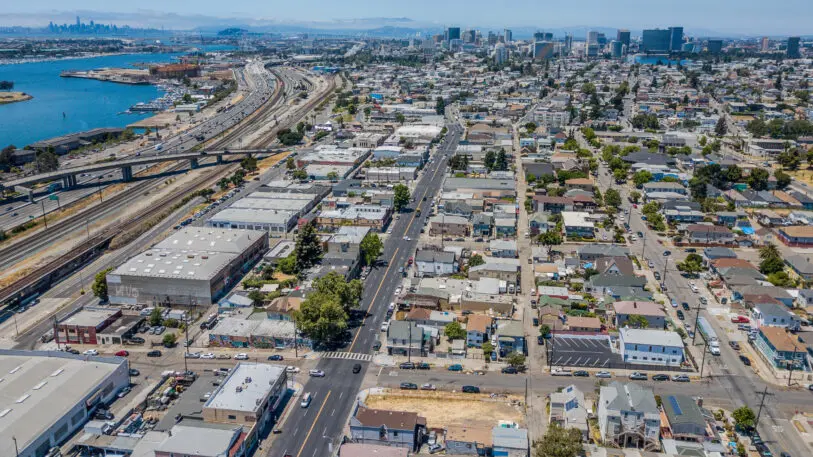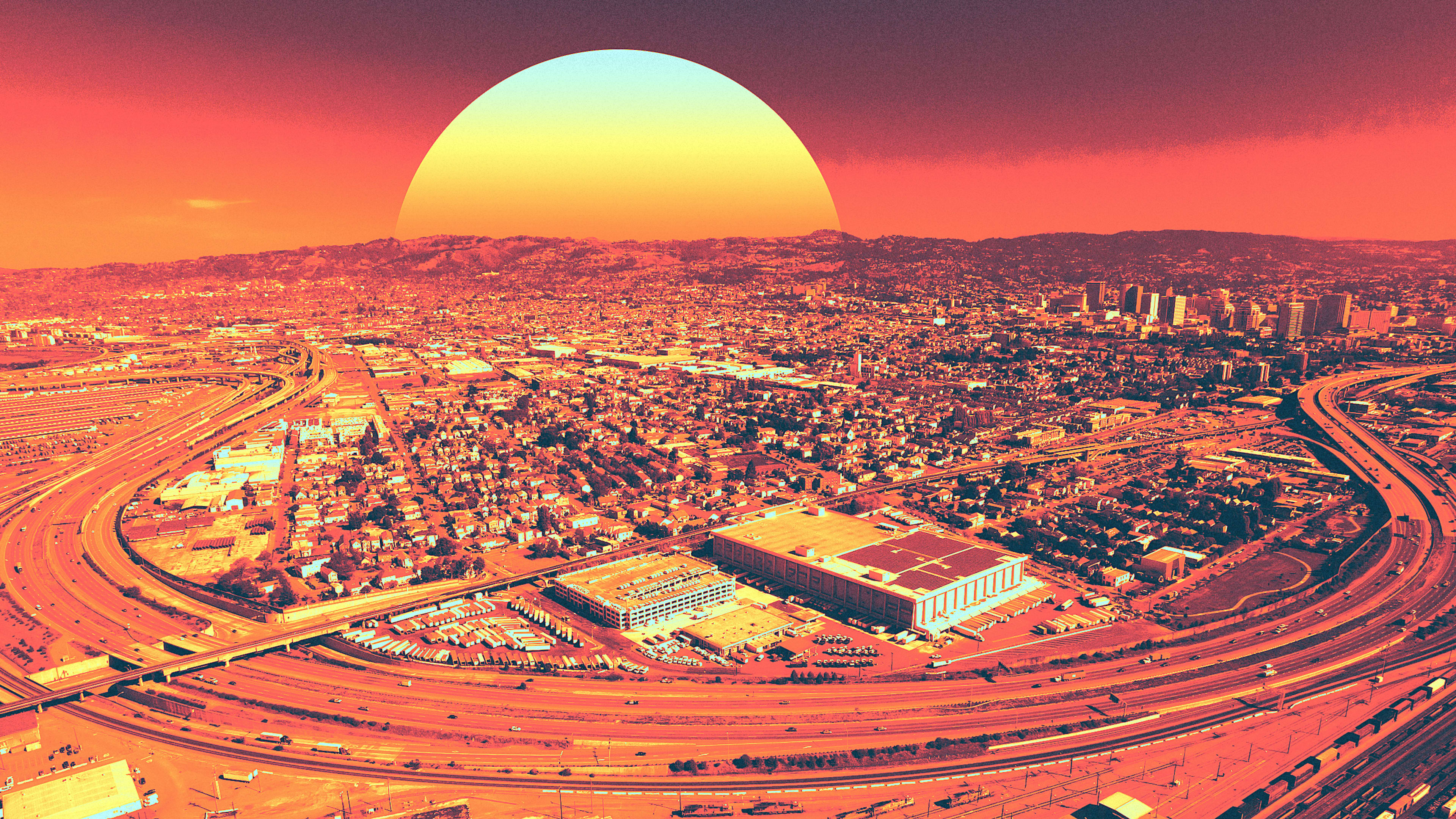Hunger is not evenly spread across the United States, nor within its cities.
Even in the richest parts of urban America there are pockets of deep food insecurity, and more often than not it is Black and Latino communities that are hit hardest.
As an urban planning academic who teaches a course on food justice, I’m aware that this disparity is in large part through design. For over a century, urban planning has been used as a toolkit for maintaining white supremacy that has divided U.S. cities along racial lines. And this has contributed to the development of so-called “food deserts“—areas of limited access to reasonably priced, healthy, culturally relevant foods—and “food swamps“—places with a preponderance of stores selling “fast” and “junk” food.
Both terms are controversial and have been contested on the grounds that they ignore both the historical roots and deeply racialized nature of food access, whereby white communities are more likely to have sufficient availability of healthy, reasonably priced produce.
Instead, food justice scholar Ashanté M. Reese suggests the term “food apartheid.” According to Reese, food apartheid is “intimately tied to policies and practices, current and historical, that come from a place of anti-Blackness.”
Regardless of what they are called, these areas of inequitable food access and limited options exist. The U.S. Department of Agriculture estimates that 54.4 million Americans live in low-income areas with poor access to healthy food. For city residents, this means they are more than half a mile from the nearest supermarket.
More expensive, fewer options
The development of these areas of limited healthy food options has a long history tied to urban planning and housing policies. Practices such as redlining and yellowlining—in which the private sector and government conspired to restrict mortgage lending to Black and other minority homebuyers—and racial covenants that limited rental and sale property to white people only meant that areas of poverty were concentrated along racial lines.
In addition, homeowner associations that denied access to Black people in particular and federal housing subsidies that have largely gone to white, richer Americans have made it harder for people living in lower-income areas to move out or accrue wealth. It also leads to urban blight.
This matters when looking at food access because retailers are less willing to go into poorer areas. A process of “supermarket redlining” has seen larger grocery stores either refuse to move in to lower-income areas, shut existing outlets, or relocate to wealthier suburbs. The thinking behind this process is that as pockets in a city become poorer, they are less profitable and more prone to crime.
There is also, scholars suggest, a cultural bias among large retailers against putting outlets in minority-populated areas. Speaking about why supermarkets were fleeing the New York borough of Queens in the 1990s, the city’s then-Consumer Affairs Commissioner Mark Green put it this way: “First they may fear that they do not understand the minority market. But second is their knee-jerk premise that Blacks are poor, and poor people are a poor market.”
In the absence of larger grocery stores, less healthy food options—often at a higher price—have taken over in low-income areas. Research among food providers in New Haven, Connecticut, in 2008 found “significantly worse average produce quality” in lower-income neighborhoods. Meanwhile a study of New Orleans in 2001 found fast-food density was higher in poorer areas, and that predominantly Black neighborhoods had 2.5 fast-food outlets for every square mile, compared to 1.5 in white areas.

“Whole Foods and whole food deserts”
Geographer Nathan McClintock conducted a detailed study in 2009 of the causes of Oakland’s food deserts. Although restricted to one Californian city, I believe what he found holds true for most U.S. cities.
McClintock details how the development of racially segregated areas in the interwar period and redlining policies afterward led to concentrated areas of poverty in Oakland. Meanwhile, decisions in the late 1950s by the then all-white Oakland City Council to build major freeways cutting through the city effectively isolated predominantly Black West Oakland from downtown Oakland.
The net effect was an outward flow of capital and white flight to the wealthy Oakland Hills neighborhoods. Black and Latino neighborhoods were drained of wealth.
This, together with the advent of suburban Oakland supermarkets accessible by car in the 1980s and 1990s, led to a dearth of fresh food outlets in predominantly Black districts such as West Oakland and Central East Oakland. What was left, McClintock concludes, is a “crude mosaic of parks and pollution, privilege and poverty, Whole Foods and whole food deserts.”
Urban planning as a solution
Food disparities in U.S. cities have a cumulative effect on people’s health. Research has linked them to the disproportionately poor nutrition of Black and Latino Americans, even after adjustment for socioeconomic status.
As much as urban planning has been part of the problem, it could now be part of the solution. Some cities have begun using planning tools to increase food equity.
Minneapolis, for example, has as part of its 2040 plan an aim to “establish equitable distribution of food sources and food markets to provide all Minneapolis residents with reliable access to healthy, affordable, safe and culturally appropriate food.” To achieve this, the city is reviewing urban plans, including exploring and implementing regulatory changes to allow and promote mobile food markets and mobile food pantries.
My hometown of Boston is engaged in a similar process. In 2010, the city began the process of establishing an urban agriculture overlay district in the predominantly Black and Latino neighborhood of Dorchester, by changing zoning to allow commercial urban agriculture. This change has provided employment for local people and food for local cooperatives, such as the Dorchester Food Coop, as well as area restaurants.
And this could be just the start. My students and I contributed to Boston mayoral candidate Michelle Wu’s Food Justice Agenda. It includes provisions such as a formal process in which private developers would have to work with the community to ensure there is space for diverse food retailers and commercial kitchens, and licensing restrictions to discourage the proliferation of fast-food outlets in poorer neighborhoods. If Wu is elected and the plan implemented, it would, I believe, provide more equitable access to nutritious and culturally appropriate foods, good jobs, and economically vibrant neighborhoods.
As Wu’s Food Justice Agenda notes: “Food justice means racial justice, demanding a clear-eyed understanding of how white supremacy has shaped our food systems” and that “nutritious, affordable, and culturally relevant food is a universal human right.”
Julian Agyeman is a professor of urban and environmental policy and planning at Tufts University. This article is republished from The Conversation under a Creative Commons license. Read the original article.
Recognize your brand’s excellence by applying to this year’s Brands That Matter Awards before the early-rate deadline, May 3.
